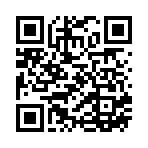Part 3: After The “i”
On June 29th, 2007 Apple began selling the first iteration of their iPhone in the United States. Canada got the iPhone the following summer with the global launch of the iPhone 3G. In its wake, I can only imagine design teams at Nokia falling over themselves to rush their own touch-screen devices to market. And it wasn’t just Nokia playing catch-up; every phone-maker’s product portfolio seemed to reflect an almost immediate iPhone unfluence, with either a touch-screen, on-device app market or at the very least a familiar-looking metal bezel over black trim.
No doubt about it, the iPhone was a revolutionary, game-changing device. Yet to this day I’ve never really been interested in owning one.
There were obvious, practical reasons. I could have imported a first-generation iPhone from the US (at a hefty surcharge), but as I remember it most of the “apps” in those early days weren’t much more than skins for iPhone-optimized web sites. By the time my carrier got the second-gen iPhone 3G I had already begun the move to Linux on my desktop computers. No iTunes meant no iPhone, simple as that.
There were political reasons as well. My short-lived affair with the HTC TyTN and a Windows laptop was no accident; after years of telling users how PowerPC was the superior chip for Macintosh computers, Apple suddenly and inexplicably switched to Intel. I was not impressed. I was similarly disappointed that Apple chose to sell the iPhone through carriers, with locks and subsidies, rather than unlocked in their own retail stores. Blogger Stefan Constantinescu wrote an excellent post in 2008 detailing how Apple had a chance to revolutionize the economics of mobile, and failed. Long story short: I felt burned by Apple and liberated by my unlocked Nokia, a device that I could use on any carrier, anywhere in the world.
Nokia trumped Apple in another, deviously clever way. In the spring of 2008 I received the first in a long series of trial devices from a blogger outreach program called WOM World. I think it started off as Nokia Blogger Relations, and its since been given the new moniker Nokia Connects. Whatever the name, the idea was genius. Anyone with some sort of online presence could request any Nokia product for a two-week trial. A review (good or bad) would send traffic to the writer’s blog and provide free marketing for Nokia. With a steady stream of shiny new toys arriving at my door the idea of being locked to an iPhone for a three-year contract seemed downright comical.
Oh yes, I forgot to mention… The standard carrier contract term in Canada is three years. We’re backwards that way.
Back to the iPhone, I’ve futzed around with almost every version of it, and after only a few minutes its always been the same story — I put it down and walk away. It just doesn’t do anything for me. I absolutely get that it’s made smartphones easier to use, especially for people who have never had one, but for someone like me who struggled through the early years of data synchronization, Internet connectivity and just about every other technological hurdle Apple’s “JesusPhone” has always seemed like a bit of a cheat.
Nokia fanboy? Mobile phone snob? Guilty as charged. I’d finally join the world of modern smartphones a few years later — but for the moment, enduring Symbian’s old school charm was about to pay off. Big time.


